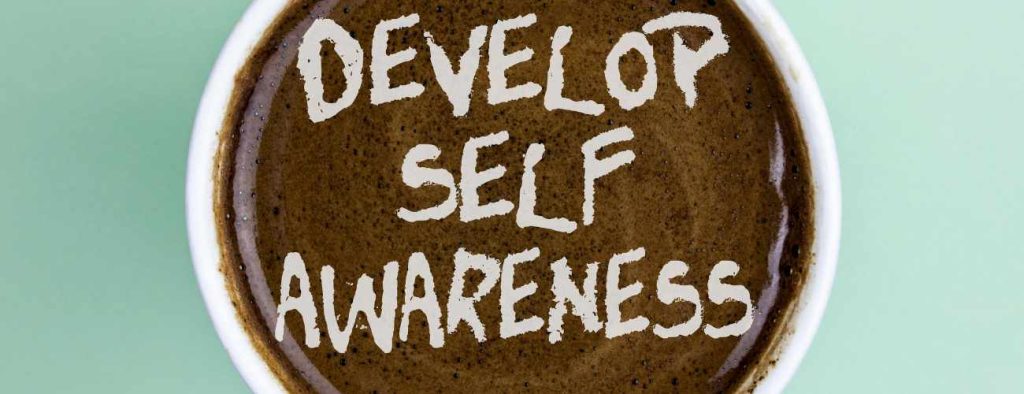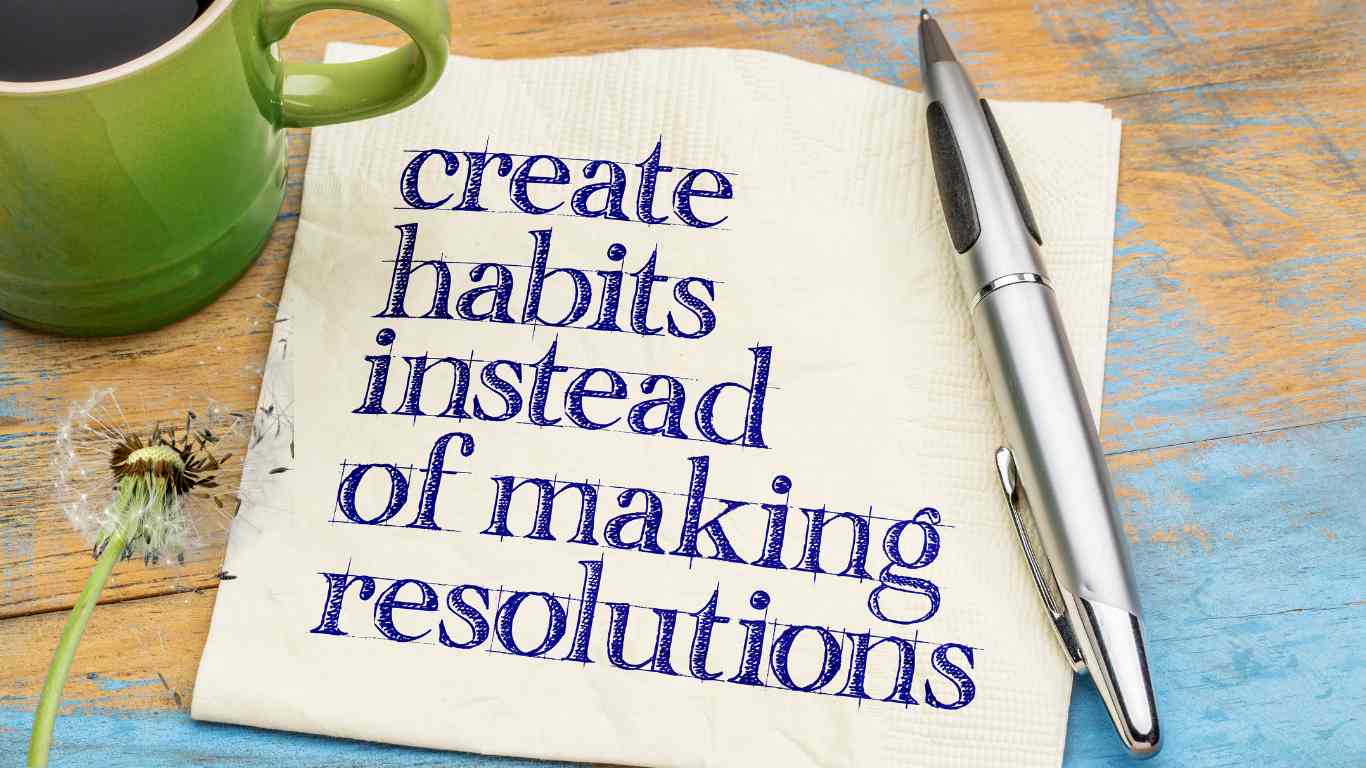It was the middle of January, and I found myself staring at a list of resolutions I had eagerly set at the end of December.
Yet, here I was, not even through the first month, and I had already broken every single one.
I felt like a failure.
Why does this keep happening?
Frustrated and disheartened, I suddenly realized there must be more to building lasting habits than just making a list and relying on willpower alone.
This realization marked the beginning of my journey to creating habits that truly stick.
Where Should We Start?
We should absolutely start with our thoughts!
I have learned that our relationship with our thoughts forms the foundation for any change, determining whether we succeed or fail.
Understanding and leveraging the mind-body connection is crucial for forming lasting habits.
Think of your subconscious mind as the driver of a bus and your conscious mind as the passenger. To change directions, you need to communicate effectively with the driver – your subconscious mind.

While your consciousness follows the subconscious, the key to lasting change lies in influencing this primary driver.
There is no doubt that the body-mind connection is a powerful tool if you learn how to use it correctly, but I strongly believe we need habit-formation strategies to create long-lasting habits.
Integrating the body-mind connection with these strategies creates a holistic approach to creating lasting change.
By aligning physical and mental practices, you can significantly enhance your ability to form and sustain positive habits.
Understanding and leveraging this connection can lead to more profound and lasting transformations.
My 2 Steps Habit Creation Framework
Body-mind connection should be our starting point and foundation for creating lasting habits!
Body-Mind Connection (1st step)
“But what do you mean by body-mind connection?“
I was also confused at times…
Let’s break it down into simple steps!
1. Recognize the Sequence:
Thoughts → Feelings → Actions:
Acknowledge that thoughts trigger feelings, which then lead to actions.
For example, thinking about chocolate cake releases dopamine, creating a craving, and often resulting in eating the cake.
2. Create Gaps Between Thoughts:
By creating space between stimulus and response, you give yourself the ability to choose your actions rather than reacting impulsively.
For instance, when you crave chocolate cake, acknowledge the thought and feeling without immediately acting on it.
After a couple of minutes, the chances are that these thoughts will lose their power.
Recognize that thoughts are just thoughts; they only have the power you give them.
It is very important to comprehend the following:
We live in the feeling of our thinking, not the other way around!!
3. Change Your Relationship with Thoughts:
You don’t have to act on every thought!
You are not your thoughts; you are what you do!
Notice your thoughts and understand their context.
For example, recognize the feeling of nervousness before a speech or the craving for sugar without letting these feelings control you.
Be self-aware.

When a new practice triggers self-doubt, instead of labelling it negatively, just acknowledge it without judgment.
By understanding and altering your relationship with your thoughts, you can steer your subconscious mind in new directions, forming lasting habits and achieving your goals.
This conscious effort to influence your subconscious mind is essential for creating meaningful and enduring change in your life.
Habit Formation Strategies (Step 2)
Mastering the body-mind connection brought about amazing changes, but I still felt something was missing to push me to consistency.
Ever wondered why some people effortlessly reach their goals while others struggle? The secret isn’t in the goal itself but in our strategy to get there.
I started researching and reading various books until I came across “Atomic Habits” by James Clear. That’s when I found the missing piece!
Imagine deciding what kind of person you want to be and then becoming that person through small, consistent habits.
Each small habit shapes a new version of yourself. For instance, if you write every day, you gradually become a writer. You don’t become a writer by writing for just one day.
Who do you wish to become? What are your values?
“Every action you take is a vote for the type of person you wish to become.”
James Clear
Consider this: who is the type of person who can lose 40 pounds?
Be the type of person who will achieve the results you desire!
Don’t concentrate on the outcome; focus on the habits you want to cultivate.
You have the power to choose your identity and every action you take matters in becoming the person you want to be.

Habits can change your beliefs about yourself!
Understanding the habit cycle – cue, craving, response, reward – can help you develop habits that align with your goals.
Habits are automatic behaviours designed to solve recurring problems in your environment. For example, seeing a doughnut, wanting it, buying it, and feeling better afterwards is a typical habit loop.
Changing Habits Effectively: The Four Laws of Behaviour Change
- Make It Obvious:
Increase the visibility of cues that trigger your desired behaviour.
For example:
- Place a bowl of fresh fruit on your kitchen counter or keep healthy snacks at eye level in your fridge.
- Set out your workout clothes the night before or keep your running shoes by the door.
- Keep vitamins or supplements near your breakfast items.
I know I am so much more likely to eat healthy snacks if I make the healthy choices obvious!
- Make It Attractive:
Associate positive emotions with the habit to make it more enjoyable and motivating.
For instance:
- Cook nutritious, visually appealing, and tasty meals to look forward to healthy eating.
- Find a workout buddy or join a fitness class to enjoy exercising together.
- Listen to uplifting music or an inspiring podcast while walking or meditating.
I love putting good music on when I go for a run!

- Make It Easy:
Simplify the process of performing the habit. Break down the habit into smaller, manageable steps.
Examples include:
- Prep healthy meals or snacks in advance.
- Start with short, manageable workouts and gradually increase intensity.
- Keep dental floss next to your toothbrush or set reminders for hydration breaks.
Sometimes, I tell myself that I will do yoga only for 5 minutes. This often motivates me and I end up doing it for much longer.
- Make It Satisfying:
Reward yourself after completing the habit to reinforce positive behaviour.
For example:
- Enjoy a small piece of dark chocolate or a smoothie after a nutritious meal.
- Treat yourself to a relaxing bath or massage after a workout.
- Track your progress with a habit tracker and reward yourself with a favourite activity after meeting your goals.
The rewards system works great for kids as well as adults; give yourself a star to keep going!
Creating and maintaining new habits is a continuous process. It’s about more than just setting goals; it’s about strategic, mindful actions that align with your values and desired identity.
By understanding and working with your subconscious mind, you can transform your habits and, ultimately, your life.
In essence, the journey to lasting change is a continuous cycle of mindful action and thoughtful reflection.
When you acknowledge the power of your thoughts and strategically cultivate habits, you unlock the potential for meaningful and enduring change in your life.
Start today, and watch as your small, consistent efforts lead to big, transformative results!



